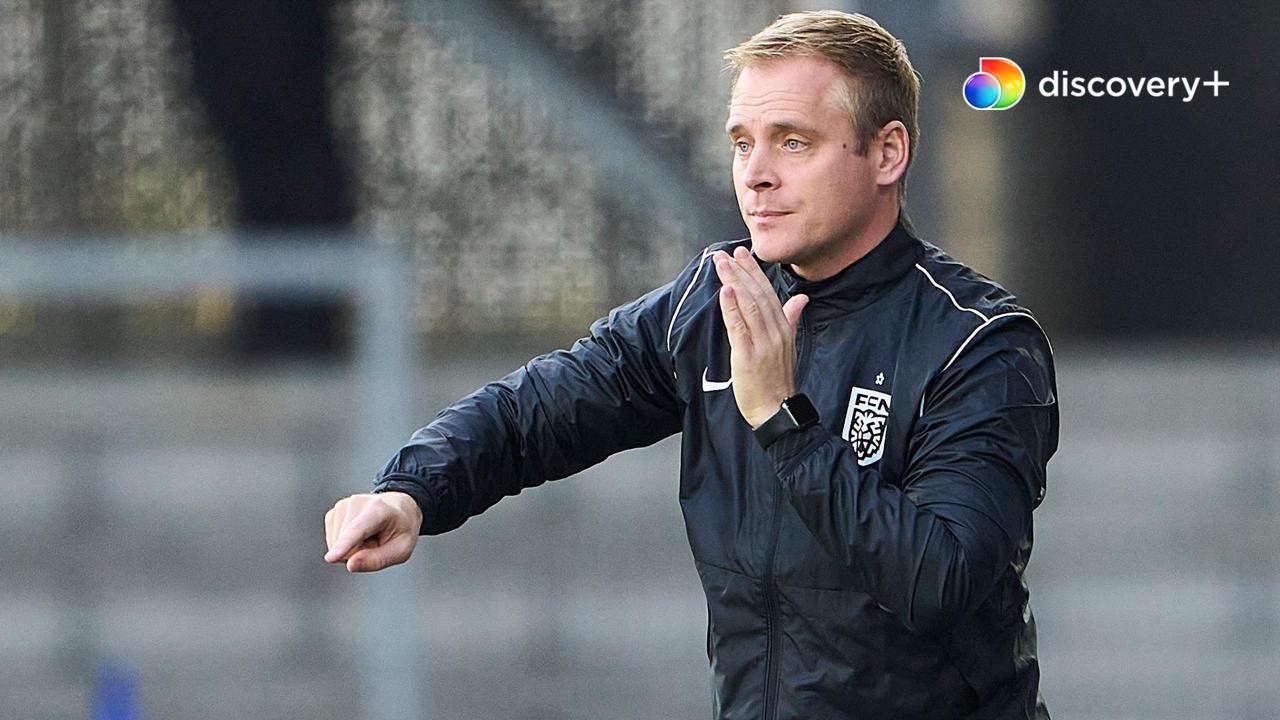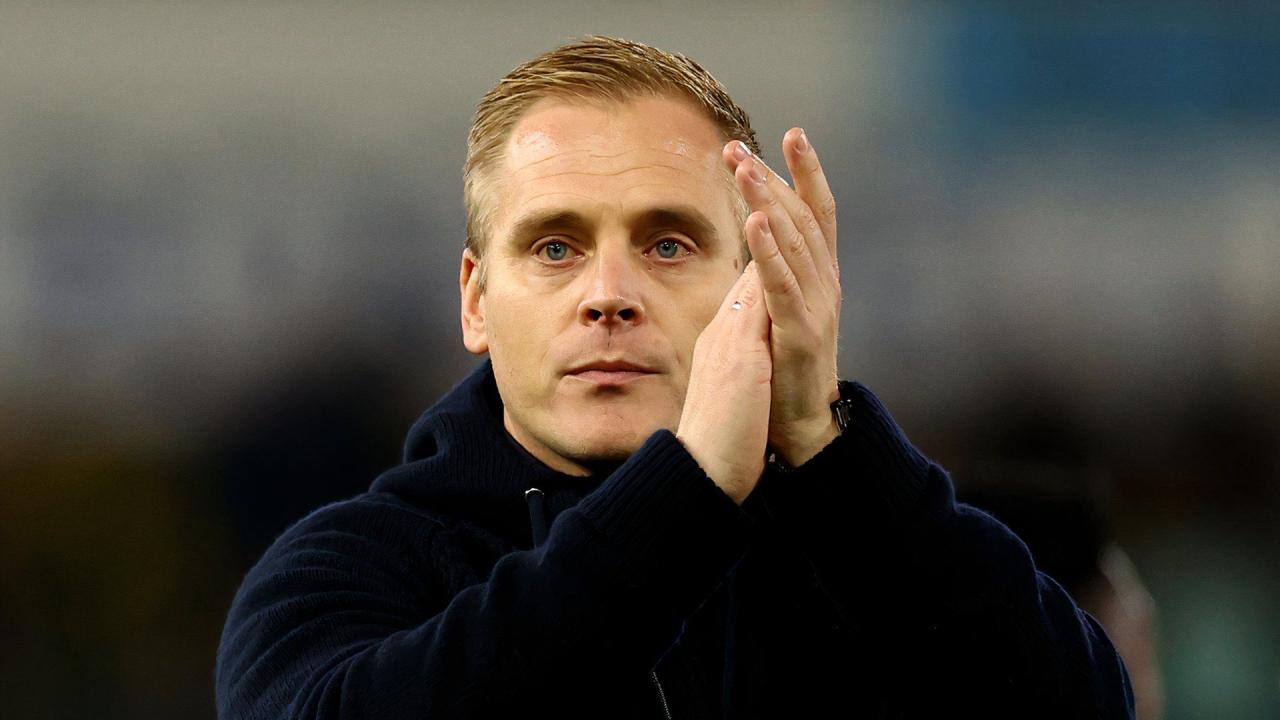Thorup outlines City striker plans after Ashley Barnes exit – Thorup Artikels City striker plans after Ashley Barnes exit. This analysis dives into Manager Thorup’s strategy for replacing the departed striker, Ashley Barnes. We’ll explore his preferred playing style, the ideal striker profile, and potential replacements currently available. The impact of Barnes’ absence on team dynamics and the club’s short-term and long-term solutions will also be examined, drawing comparisons to successful striker transitions in other clubs.
We’ll dissect Thorup’s tactical preferences, looking at the specific attributes he values in a striker – both physical and technical. This will involve comparing Barnes’ profile to the ideal, highlighting the areas where the team needs improvement. We’ll then delve into the potential replacements, profiling several candidates and assessing their suitability for the team. Finally, we’ll Artikel a comprehensive recruitment strategy, encompassing short-term fixes and a long-term plan for sustained success in the striker position.
Thorup’s City Striker Plans Post-Barnes: Thorup Outlines City Striker Plans After Ashley Barnes Exit
Following Ashley Barnes’ departure, Burnley manager Vincent Kompany faces the crucial task of finding a suitable replacement. This analysis delves into Kompany’s tactical preferences, potential striker candidates, and a comprehensive strategy for a successful transition.
Thorup’s Managerial Philosophy and Striker Requirements
Kompany’s possession-based, attacking style demands a striker capable of more than just goals. His system relies on intricate passing sequences and intelligent movement, requiring a striker who can link play effectively, hold up the ball, and create opportunities for teammates. Unlike Barnes, who excelled as a target man, Kompany’s ideal striker needs a superior technical ability and a greater contribution to build-up play.
Physically, he prioritizes a striker with good stamina, agility, and the ability to press effectively. Technical skills such as close control, passing accuracy, and finishing ability are also highly valued.
So, Thorup’s outlining Burnley’s striker plans now that Barnes is gone – a big decision! Finding the right replacement requires careful consideration, much like choosing the right tools for a project. For example, if you’re creating e-learning materials, you’ll want to check out this guide on how to choose the best AI voice generator for e-learning to make your content engaging.
Back to Burnley, though – the pressure’s on to find a strong striker to fill Barnes’ shoes.
Identifying Potential Striker Replacements
Three potential replacements, considering their skill sets and market availability, are Artikeld below. The comparison considers their strengths, weaknesses, and estimated transfer fees, providing a balanced perspective for decision-making.
| Striker | Strengths | Weaknesses | Estimated Transfer Fee (Millions €) |
|---|---|---|---|
| Ivan Toney (Example) | Clinical finishing, strong in the air, good link-up play | Disciplinary record, injury history | 30-40 |
| Victor Osimhen (Example) | Pace, power, clinical finishing | Injury proneness, high transfer fee | 80+ |
| Benjamin Sesko (Example) | Young talent, high potential, pace | Lacks experience at top level, consistency | 25-35 |
Ivan Toney Profile: A proven goalscorer in the Championship, Toney possesses the physicality and technical ability to thrive in Kompany’s system. However, his disciplinary record and injury history are significant concerns. Victor Osimhen Profile: A prolific goalscorer with exceptional pace and power, Osimhen is a high-profile target but his price tag and injury concerns are major factors. Benjamin Sesko Profile: A young, exciting talent with huge potential, Sesko represents a long-term investment, offering pace and a high ceiling but lacking immediate experience at the highest level.
So, Thorup’s outlining Burnley’s striker plans now that Ashley Barnes is gone – big shoes to fill! It’s a tough job, finding the right player, kind of like finding the right career path. If you’re thinking about a tech career, check out affordable full stack developer bootcamps with job placement to upskill. Back to Burnley, though – Thorup’s got a lot on his plate this transfer window.
The choice between a young prospect and an established player involves weighing short-term impact versus long-term development. A younger player offers a lower initial investment and potentially higher resale value but carries a higher risk of inconsistency. An experienced player offers immediate impact but comes with a higher transfer fee and potentially lower resale value.
So, Thorup’s got to figure out City’s striker situation now that Barnes is gone. It’s a big challenge, kind of like how we need to tackle serious health issues; for example, check out this article about the urgent need for cancer warnings on alcohol: Putting a cancer warning on alcohol is overdue, doctors say. Getting back to football, Thorup needs a plan, and fast, to replace Barnes’ goals.
A robust recruitment strategy should involve thorough scouting, data analysis, and negotiations with multiple agents to secure the best possible deal.
Impact of Barnes’ Departure on Team Dynamics

Barnes’ departure will necessitate adjustments to Burnley’s attacking strategy. His absence will reduce Burnley’s aerial threat and ability to hold up play. The team may adapt to a more fluid, possession-based approach, relying on quick passing and movement to create scoring chances. The loss of a key player could potentially impact team morale, though a positive approach and focus on the new striker’s integration should mitigate negative effects.
Training will need to focus on new attacking patterns and strategies, emphasizing speed and technical proficiency.
Short-Term and Long-Term Striker Solutions, Thorup outlines City striker plans after Ashley Barnes exit

Short-term solutions could involve a loan signing of a proven player or promoting a promising youth player. Long-term, Burnley should focus on developing youth talent and identifying promising players through thorough scouting and data analysis. A three-season budget should allocate funds for immediate acquisition, youth development, and future transfers. Data analytics can identify players who fit the team’s style and predict their potential success.
Illustrative Examples of Successful Striker Transitions

Several clubs have successfully navigated similar transitions. For example, Manchester City’s seamless transition after Sergio Aguero’s departure involved a combination of Erling Haaland’s acquisition and tactical adjustments. Similarly, Liverpool’s success after Luis Suarez’s departure was due to a multi-pronged approach that included signing players like Roberto Firmino and developing internal talent. Tottenham’s transition from Harry Kane to Richarlison, however, was less successful, highlighting the complexity of such changes.
Successful transitions typically involve careful planning, a suitable replacement, and tactical flexibility.
Final Wrap-Up
Replacing a key player like Ashley Barnes requires a multifaceted approach, and Thorup’s plan showcases a blend of immediate solutions and long-term vision. By carefully considering player profiles, tactical requirements, and team dynamics, the club can navigate this transition successfully. The analysis of successful transitions from other clubs provides a valuable framework, highlighting the importance of strategic planning and a keen understanding of the team’s needs.
The club’s commitment to data-driven decision-making further enhances its chances of finding a suitable replacement and building a strong, sustainable striker position for the future.
Commonly Asked Questions
What are the key differences between Thorup’s preferred striker profile and Ashley Barnes’?
This will depend on the specifics of Thorup’s analysis, but likely differences would involve pace, technical skill, and perhaps a different style of play (e.g., more of a target man vs. a mobile forward).
What is Thorup’s preferred playing style?
The Artikel doesn’t specify this directly; further research is needed to answer this question definitively. However, the analysis will likely reveal clues within the context of his striker requirements.
How much budget has the club allocated for striker acquisition?
The exact budget figure isn’t provided in the Artikel; the analysis will likely discuss budget allocation over a three-year period, but specific amounts are to be determined.
